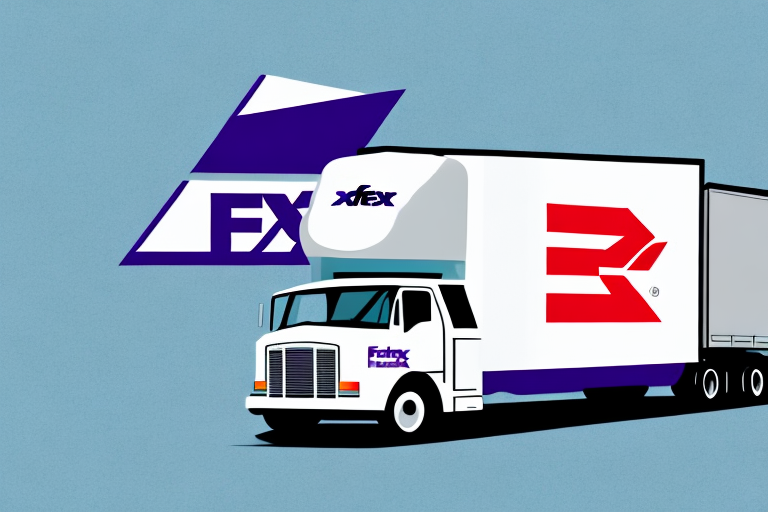Understanding FedEx's Peak Surcharge: An In-Depth Analysis
If you're a regular shipper with FedEx, you may have noticed changes in your shipping costs, especially during high-demand periods. This increase is often due to FedEx's peak surcharge policy, which was first implemented in 2020. In this article, we will provide a comprehensive overview of the peak surcharge policy, including its purpose, impact on shipping costs, calculation methods, and strategies to mitigate its effects.
Why Did FedEx Implement the Peak Surcharge?
FedEx introduced the peak surcharge policy to manage the augmented costs associated with high-volume shipping seasons such as holidays, Black Friday, and Cyber Monday. During these peak periods, demand for shipping services surges, necessitating additional resources.
Resource Allocation During Peak Times
To handle the increased volume, FedEx allocates more resources in areas like labor, transportation, and technology. These additional resources help maintain service quality but also lead to higher operational costs, which the peak surcharge helps offset.
The Impact of Peak Surcharges on Shipping Costs
The peak surcharge directly affects your shipping expenses when using FedEx services during peak periods. This surcharge is applied based on specific package criteria such as weight, size, and destination.
Calculation of the Surplus
The surcharge amount varies; for instance, packages weighing between 51 and 70 pounds might incur a surcharge of approximately $3.00 per package. However, the exact cost depends on the package's characteristics and the current demand levels.
Temporary Nature of the Surcharge
It's important to note that the peak surcharge is not a permanent fee. It is only applicable during designated peak periods, typically around the holiday season and major shopping events. FedEx usually notifies customers in advance, allowing businesses to adjust their shipping strategies accordingly.
Calculating the Peak Surcharge for Your Shipments
To estimate the peak surcharge, you need to consider factors like the package's weight, destination, and shipping date. FedEx provides an online surcharge calculator to help you determine the expected costs.
Using FedEx's Online Tools
Visit the FedEx Peak Surcharge Calculator to get an estimate based on your specific shipment details.
Seasonal Adjustments
FedEx may adjust surcharge rates based on real-time congestion levels during peak seasons. It's advisable to regularly check FedEx's official Peak Surcharge Policy page for the most current information.
Strategies to Mitigate the Effects of Peak Surcharges
While peak surcharges can impact your business's bottom line, several strategies can help minimize these costs:
- Plan Shipments Strategically: Schedule non-urgent shipments outside of peak periods to avoid additional fees.
- Explore Alternative Shipping Carriers: Compare rates and policies with other carriers like UPS and DHL to find more cost-effective options.
- Negotiate with FedEx: If you have a significant shipping volume, you might be able to negotiate lower surcharge rates.
- Leverage Volume Discounts: Utilize FedEx's volume discounts to reduce overall shipping costs.
Optimizing Packaging
Reducing the size and weight of your packages can help lower shipping costs and potentially avoid surcharges. Consider using smaller, lighter packaging materials where possible.
Alternative Shipping Methods
Ground or freight shipping might not incur peak surcharges and can be more cost-effective, albeit with longer delivery times.
Types of Packages Affected by Peak Surcharges
FedEx's peak surcharge policy applies to various shipping services, including:
- Ground Economy
- Ground Residential
- Ground Commercial
- Express Saver
- 2Day and 2Day AM
- Standard Overnight
- Priority Overnight
- First Overnight
- International Ground Service
- International Economy Service
- International Priority Service
Peak surcharge rates can vary based on the package's origin and destination. For precise rates, consult FedEx's Surcharge Rates page.
Negotiating Peak Surcharges with FedEx
If you believe a peak surcharge is unwarranted for your shipment, you can negotiate with FedEx to reduce or waive the fee. Effective negotiation requires a solid understanding of FedEx's policies and preparation.
Highlighting Long-Term Partnerships
Emphasize your longstanding relationship with FedEx and the volume of business you bring. Loyal customers may have more leverage in negotiating favorable terms.
Providing Justifications
Present evidence that your shipment does not contribute significantly to peak season volumes or strain FedEx's resources. This could support your case for reducing or eliminating the surcharge.
The Future of FedEx's Peak Surcharge Policy
While predicting FedEx's exact future policies is challenging, certain trends can provide insights:
Technological Advancements
Emerging technologies like drones and autonomous vehicles may streamline shipping processes, potentially impacting the necessity and scale of peak surcharges.
Global Events and Supply Chain Dynamics
Natural disasters, political instability, or other global events can disrupt supply chains, influencing FedEx's need to adjust peak surcharges to manage unforeseen demand spikes.
Comparing FedEx's Peak Surcharge to Competitors
Other major carriers like UPS and DHL also implement peak surcharge policies, each with its own structure and rates. Comparing these can help you choose the most cost-effective option for your business.
Cost and Service Quality
When evaluating carriers, consider not just the surcharge costs but also service aspects like delivery speed, reliability, and tracking capabilities.
Carrier Capacity During Peaks
Assess each carrier's capacity to handle increased shipping volumes during peak periods to ensure timely deliveries and consistent service quality.
Understanding Hidden Fees and Exceptions in Peak Surcharge Policies
Beyond peak surcharges, FedEx may impose other fees that could affect your shipping costs:
Residential Delivery Surcharge
This fee applies to packages delivered to residential addresses and varies based on weight, dimensions, and location. Reviewing FedEx's fee schedule can help you anticipate these additional costs.
Exceptions to Peak Surcharges
FedEx's policies may include exceptions for certain package types or destinations. For example, shipments to rural areas or those requiring extra handling might have different surcharge rates or exemptions.
Conclusion
FedEx's peak surcharge policy is designed to manage the increased costs associated with high-demand shipping periods. Understanding how these surcharges work and exploring ways to mitigate their impact can help your business manage shipping expenses effectively.
As e-commerce continues to grow, peak periods are becoming more frequent and longer in duration, making it essential for businesses to stay informed about carrier policies and adjust their shipping strategies accordingly.




















